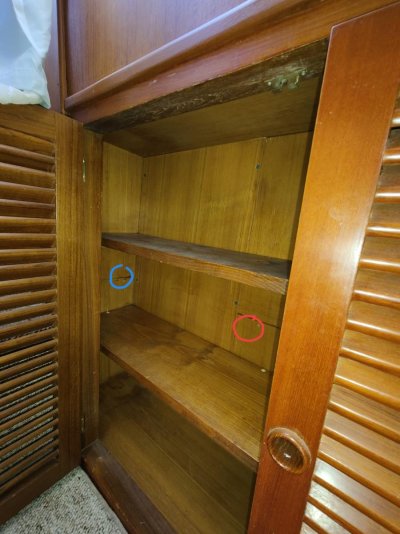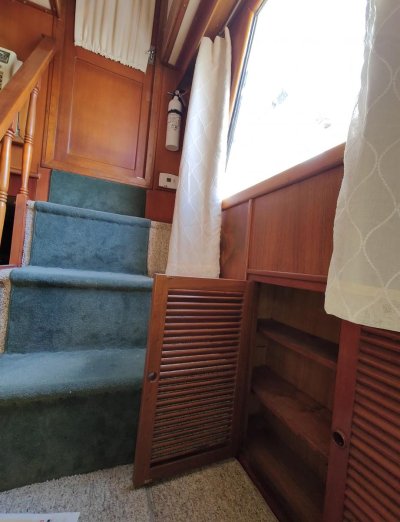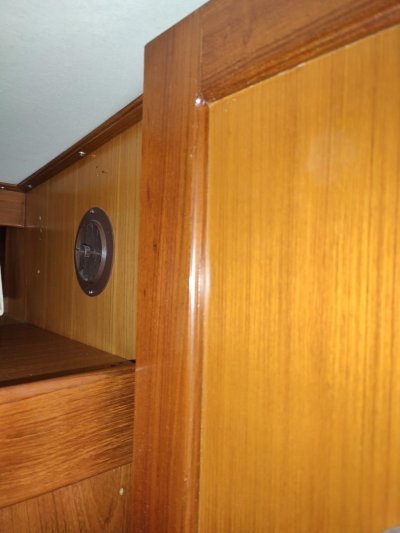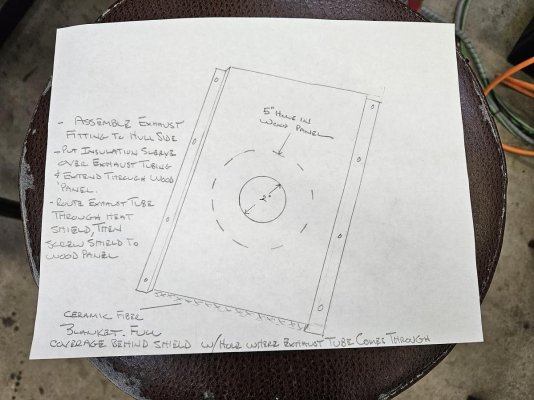paulga
Guru
- Joined
- May 28, 2018
- Messages
- 1,019
- Location
- United States
- Vessel Name
- DD
- Vessel Make
- Marine Trader Sundeck 40'
The boat is a marine trader sundeck.
I'm planning the location for some air duct and exhaust for a diesel heater, in the Port side salon closet.
Does there exist a passage to the aft cabin through the blue circle?
Is the red circle the usual location for the exhaust through put?
Esp, what are behind the panels? Are there water/fuel pipes, electric wires or some other snags?

The overall view of this corner

The new air register would be beside the existing register

I'm planning the location for some air duct and exhaust for a diesel heater, in the Port side salon closet.
Does there exist a passage to the aft cabin through the blue circle?
Is the red circle the usual location for the exhaust through put?
Esp, what are behind the panels? Are there water/fuel pipes, electric wires or some other snags?

The overall view of this corner

The new air register would be beside the existing register


